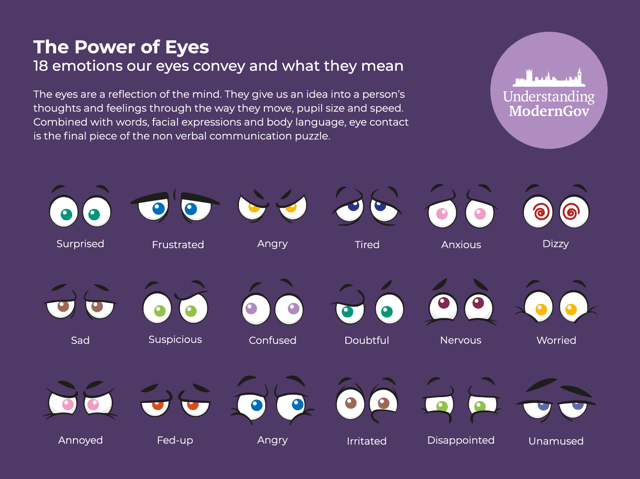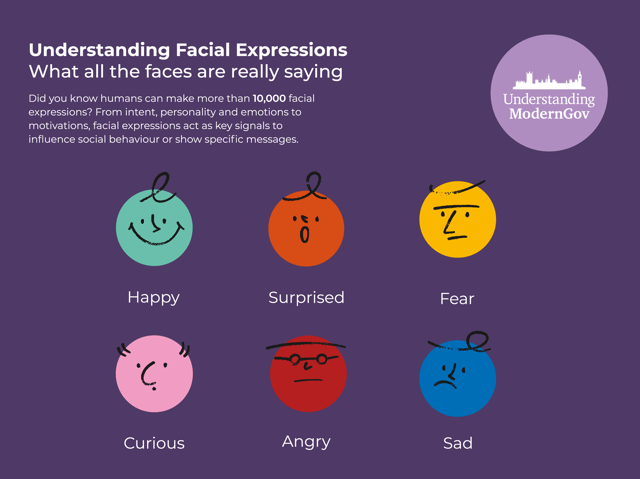Why is Nonverbal Communication Important in the Workplace?
 Kathryn Williams
·
5 minute read
Kathryn Williams
·
5 minute read
Did you know that nonverbal communication consists of more than just body language?
We all know by now why body language is one of the most important forms of communicating. It can help enhance our verbal communication through visual aids like hand gestures, eye contact and posture.
But what other important cues make up nonverbal communication?
In this blog, we will focus on defining the difference between body language and nonverbal communication, and identify what other nonverbal cues exist beyond body language and why they are important in personal and professional communication.
Contents:
- How to Recognise the Difference Between Body Language and Nonverbal Communication
- What are the Additional Cues and Why is Nonverbal Communication Important?
- What are the Advantages of Nonverbal Communication?
Defining Body Language and Nonverbal Communication
Body language expert, Bill Acheson, says ‘most people see no difference between the terms body language and nonverbal communication'.
The two terms are often used interchangeably, and this is because body language is a subset of nonverbal communication. However, body language is just the tip of the iceberg.
Let's define the two terms:
Body Language in communication refers to the gestures and movements that individuals use to convey their thoughts, feelings, and attitudes. This is usually exclusive to physical movements such as hand gestures, good posture, maintaining eye contact and more.
According to experts, body language makes up around 70-93% of all communication.
Read: What is the role of body language in communication?
Nonverbal Communication is important as it encompasses a broader spectrum of cues beyond just body language. It includes more subtle gestures, facial expressions, tone of voice, attire, and even the physical environment. Nonverbal cues can convey emotions, intentions, attitudes, and interpersonal dynamics.
How to Recognise the Difference Between Body Language and Nonverbal Communication
While body language is a subset of nonverbal communication, it does exclude many high impact cues that aren’t the product of movement.
Acheson says "Nonverbal communication is far more extensive because it consists of both body language and a wide range of other cues as well."
So, What are the Additional Cues and Why is Nonverbal Communication Important?
We have broken down a list of the six most important nonverbal cues in communication.
1. The Use of Space (Proxemics)
People often recognise the importance of their "personal space" during interactions. This concept is known as proxemics.
Various factors influence the personal space we require and the boundaries we establish. These include social norms, cultural expectations, context, individual traits, and the level of intimacy with others.
Edward Hall coined the term "proxemics" and defined four main zones of personal space:
Intimate Distance (0-18 inches): This is the most informal of the four. It includes close distance interactions such as a hug or the distance it would take to whisper to a confidant.
Personal Distance (19 inches to 3 feet): This is a close conversational distance. Most people will interact with family members or close friends in this way.
Social Distance (4 to 11 feet): Engaging in conversation with a colleague at work often involves maintaining a social distance.
Public Distance (12 feet or more): This is used in public speaking. Individuals often unconsciously adapt their behavior when speaking at a public distance. This may involve speaking loudly and adjusting their posture to ensure their voice can reach a larger audience.
For example, consider two colleagues having a conversation. Their physical distance during this interaction is an example of proxemics. If they stand too close, it might be deemed intrusive and feel uncomfortable. However, standing too far apart could convey formality or detachment.
2. The Use of Time (Chronemics)
Chronemics is the study of how time is used in communication.
We use time as a communication tool in many ways. From punctuality to social expectations around waiting and response time, to general standards around time management.
For example, the length of a pause between speakers, can convey various meanings such as respect, thoughtfulness, or disagreement. Similarly, a person who speaks quickly can indicate urgency or excitement. Whereas a slower pace can indicate contemplation or calmness.
Cultural norms play a huge part in chronemics, especially within the workplace.
We can call these "time rules". A good example of this is punctuality. Arriving late can communicate disrespect or disregard for time related values. Whereas being early communicates respect and commitment.
3. Paralanguage
Paralanguage is another broad category of nonverbal communication. It places the focus on not what we say but the how we say it.
Some aspects of paralanguage include:
Voice quality: This includes volume, tone, pitch, rhythm, rate of speech, pronunciation and enunciation. All these elements should be adapted to the situation you are speaking in.
Your tone of voice can reveal an underlying message that contradicts what is actually being said.
For example, saying "I'm so happy for you" in a monotone voice may sound disingenuous.
Non-fluency features: This includes filler words and sounds (such as "urm" and "hmmm" etc.). As well as false starts, hesitation and interruptions/conversation overlaps.
For example, saying "urm" a lot when you are speaking may indicate you are nervous, or unsure about what you are saying.
Non-linguistic sounds: This includes sighs, clearing of throat, groans and any other sounds we add to our voices that add to our expression.
For example, a sigh before speaking may indicate lack of care or tiredness and portray a negative attitude. Whereas clearing your throat may be used to attract attention before speaking and create a positive impact by captivating your audience.
Related: What is Meant by Good Verbal Communication Skills?
4. Appearance
The way you present yourself visually is often the first form of nonverbal communication.
Your clothing and style can communicate many nonverbal cues. This includes mood, level of confidence, interests, age, authority, values and more.
You should keep in mind the occasion you are dressing for and dress accordingly.
For example, dressing smartly for an interview demonstrates respect for the opportunity and workplace you are interviewing with. This helps create a positive initial impression that can set the tone for the rest of the interview.
The psychology of colour is another interesting area of nonverbal communication.
For example, the colour blue is often associated with clear skies which evokes calm and stability. Is it a coincidence that most work suits are a navy blue? Not at all. It's a commanding colour that projects authority.
5. Eye Contact
Eye contact is one of the most important forms of nonverbal communication.
Maintaining a direct gaze with someone while conversing can help both people focus on the conversation and improve understanding.
Good eye contact also helps to:
- Bond with others
- Improve engagement
- Display honesty
- Build respect
For example, good eye contact is an important tool during a presentation. It helps to build trust and a strong rapport with your audience and keeps them engaged throughout.
Importance of Body Language in Presentations (+ Good & Bad Examples)
6. Facial Expressions
Facial expressions play a crucial role in nonverbal communication as they are universally understood.
Whether it's happiness, sadness, anger, surprise, fear, or disgust, these facial expressions transcend cultural boundaries and convey emotions effectively across all backgrounds.
What are the Advantages of Nonverbal Communication?
Nonverbal communication is vital for supporting the words that you are saying, and most of the time we don't even realise we are doing it. Here are some uses and advantages of nonverbal communication that you may use in your every day life:
1. Complementary
Nonverbal cues can enhance and reiterate the meaning of spoken words. In the context of the workplace, a manager may give an employee a pat on the back after praising their good work. This can nicely complement their praise and create a greater impact.
2. Accenting
This is when nonverbal cues are paired with a word or phrase to emphasise or highlight the importance of your verbal message. For example, if an individual says "I want it done now (slams hand on table)". By slamming their hand on the table, they are emphasising the urgency and importance of what they are saying. Granted, this could also come across has aggressive depending on the tone and manner in which it is said.
3. Substitutional
Nonverbal signals can sometimes act as a substitute for a verbal message entirely. An example of this communication includes nodding or shaking your head to indicate "yes" or "no". Or shrugging your shoulders when you are unsure of something. Or if someone asks you where the bathroom is, you could simply point and smile.
4. Repetition
Nonverbal communication can sometimes reinforce what you are saying verbally. For example, if you say "The train station is on the right" and use you arm to point in the direction at the same time, you are reaffirming your statement and making it clear to the listener exactly where they need to go.
5. Saves Time
By pairing your words with nonverbal communication, your message will be delivered and received much quicker, saving valuable time for both yourself and your listener.
Discover Our Communication Skills Training Courses Led By Experts
Want to improve your soft skills to become a more effective communicator in your personal or professional life?
All of our training courses can be customised and developed specifically for your team or organisation and presented on-site at your offices, at an off-site suitable location or virtually.
👇Click the banner below to enquire with our in-house team








